June 28, 2014
Do you consider yourself to be an intelligent person?
PS: step by step
(Hat Tip: Doug Henders)
June 24, 2014
with mighty wings outspread
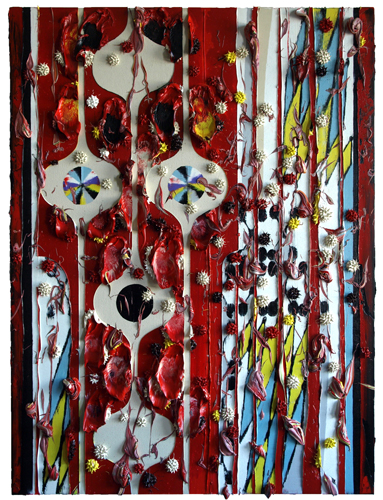
with mighty wings outspread
2014
#455
48"x36"
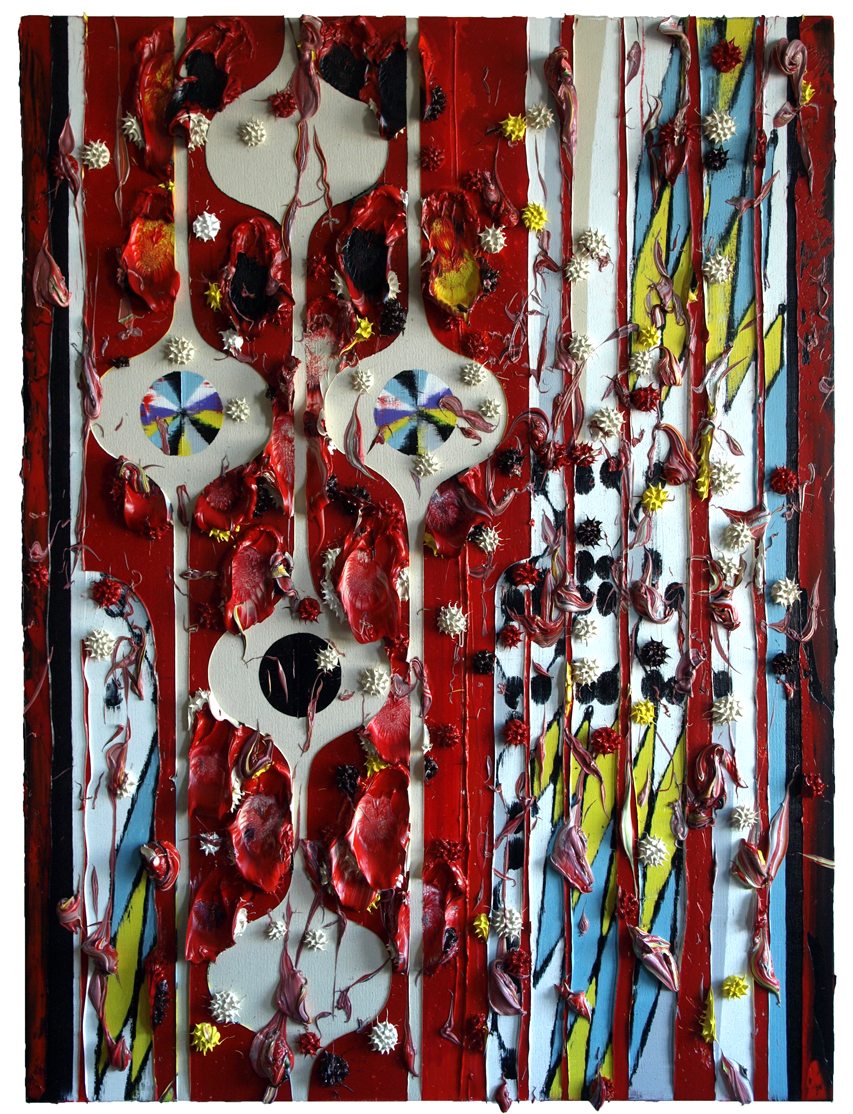
June 18, 2014
Happy to Fell Trees
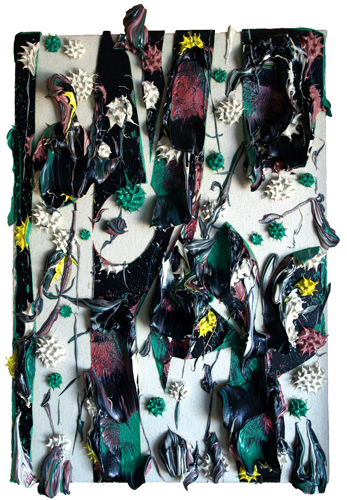
Happy to Fell Trees
2014
#454
18"x12"
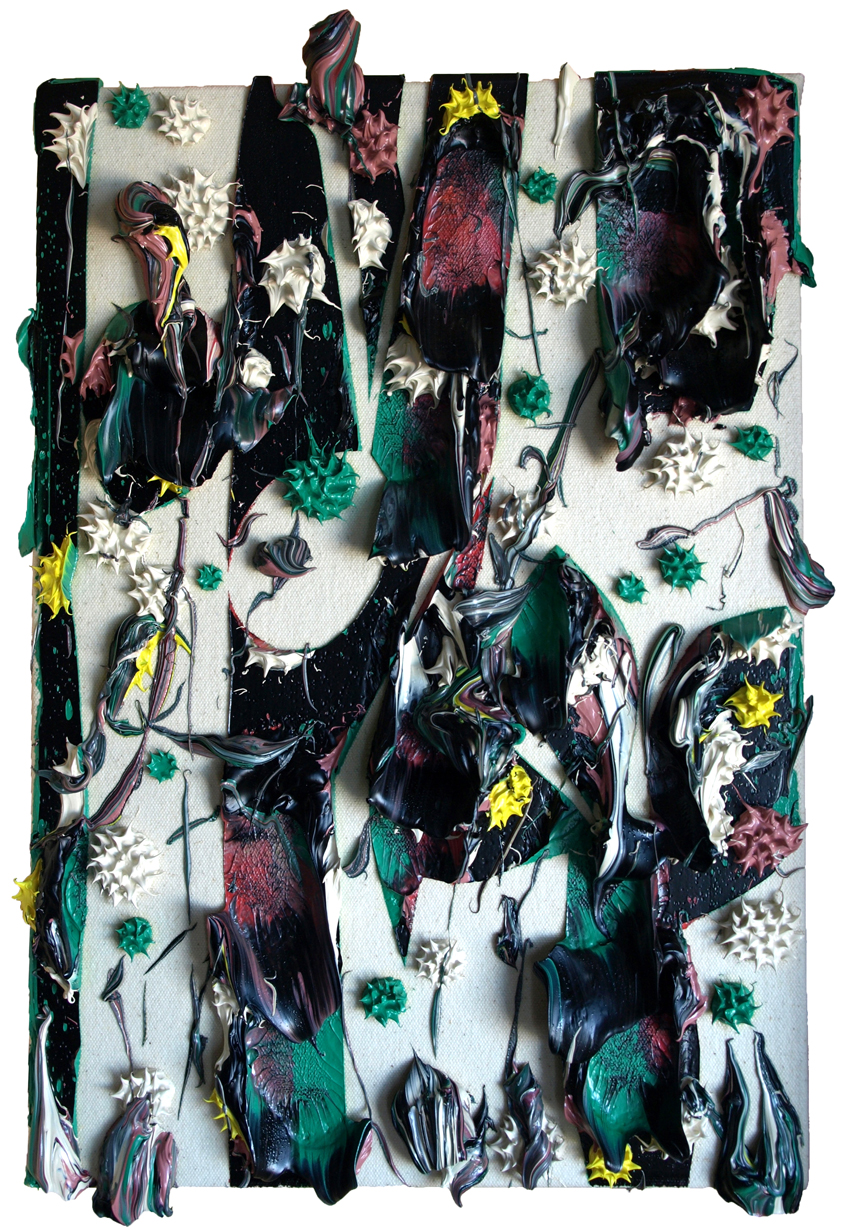
June 17, 2014
But Still, I Marvel
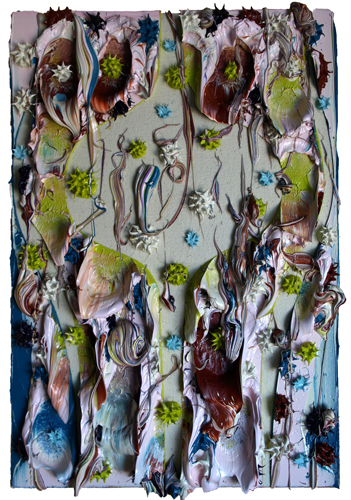
But Still, I Marvel
2014
#453
18"x12"

Vision, anyone?
![]()
As I read Ned Beauman's article By Brute Force in Aeon Magazine, I relived my first visit to DIA Beacon when the realization finally dawned that the artists presented (Flavin, Irwin, Judd, On Karawa, Sol Lewitt, and more) had anticipated the Information Age decades before it happened. They had dialed down materiality and distilled art into a set of instructions.
Beauman spins a delightful essay linking art, mathematics, hacking, encryption, and digital currency into a loop that lassos the difference between a meaningless universe wrought by chance and a meaningful universe born of love.
I snip from an article that should rather be read in full:A 'brute-force attack' means guessing a password or encryption key by methodically trying out every possible combination of letters and numbers until you find one that works.
Then Beauman identifies artists who identify with combinatorial exhaustion, who want to be a cog in something turning; and artists who cheated or shorted the system, who placed a thumb on the scale, who subtly subverted the zeitgeist, who chanced the arbitrary in favor of caprice, imagination and subjectivity.
I snip:In his own essay on Watt in 1992, the French philosopher Gilles Deleuze wrote:
The combinatorial is the art or science of exhausting the possible, through inclusive disjunctions. But only the exhausted can exhaust the possible, because he has renounced all need, preference, goal or signification. Only the exhausted is sufficiently disinterested, sufficiently scrupulous. Indeed, he is obliged to replace projects with tables and programs denuded of sense.Disinterested. Scrupulous. Deleuze seems to be imagining the creator as a sort of ideal bureaucrat or scrivener. This is just right for Boetti, who voluntarily turned himself into a mailroom clerk. In his essay 'Paragraphs on Conceptual Art' (1967), the American artist Sol LeWitt describes a similar demotion:
When an artist uses a conceptual form of art, it means that all of the planning and decisions are made beforehand and the execution is a perfunctory affair. The idea becomes a machine that makes the art... [T]he fewer decisions made in the course of completing the work, the better. This eliminates the arbitrary, the capricious, and the subjective as much as possible.
There are many references to bureaucracy in the article. The world as bureaucratic, artists as
"angelic bureaucrats". I personally think that bureaucracy is a natural enemy of art, but that's just me. I turned my back to this in grad school at the end of the 80's because I felt that art had a right to turn another page of art history.
Here is a key issue lurking in this article: that the limit function to the brute force approach is nearly limitless time... human beings don't have that luxury. The infinite monkey theorem is well known: chance operations could generate something as unique as Shakespeare given enough time, a near infinity of time. We who are comfortable and snug in our Western Democracies are almost completely certain that we are the product of aeons of combinatorial chance, the bump and grind of the elements since creation happenstance to result in our precious third rock from our sun. But to my my eye the author seems to fly against the popular opinion that atheism had triumphed over the existence of a deity and the faith required to light that tinder. Beauman advances two possibilities, two different kinds of faith: 1. That given enough time, we could find G-d in an infinite brute force permutation. 2. That G-d is manifest when we exercise our freedom (to reiterate: caprice, imagination and subjectivity).
Without this faith, we exist in a meaningless universe (the link is to salute Vi Hart's parody of existential angst). Atheism is corroded by the cynicism that we are meaningless because the universe is meaningless, this road leads quickly to nihilism, the renunciation of freedom and the proscription of originality.
We live within the context of aeons, but we don't experience an aeon since our lives are but a blink of an eye. So it seems that we all have to jump the gap between mortality and (immortality?) the infinite as personal, arbitrary as our will allows, capricious, and subjective.
Vision, anyone?
Anyone?
June 10, 2014
Vi Hart, Painting.
"...Your substance will be digested and incorporated into my own being..."
(Vi Hart's YouTube Channel)
Against Voluptuous Bodies
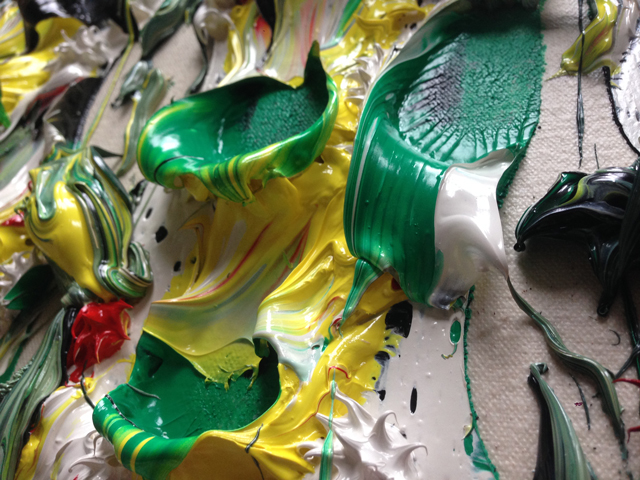
When I first came across J.M. Bernstein's Against Voluptuous Bodies, I was intrigued by the title, assuming that is was a critique of sensuous materiality in art, in painting. I always want to hear out a critical opposition, a systems test. But upon reading the book (not the easiest going, I think his target audience are those folks who command a roster of esteemed thinkers from Kant to Adorno... and I do not fit that description, few do...), I suspect that the first word in his title does not mean "in opposition to", but rather an engagement of sorts, an adjacency, a connection. What follows below the fold is my transcription of a couple of pages in the center of the book that highlight my point. I have some hope that Mr. Bernstein might be defending my choice many years ago to focus on the material dimension of painting, on facture amplified.
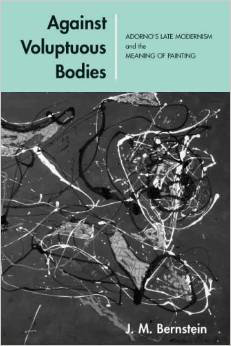
P. 161, 162
If there are no positive meanings outside art that can be cited, then art will be forced to cite itself, the fact of it's continuing, without anything to support that self citation other than works. What such works allow us is the experience of the absence of experience. But that experience is one of semblance, illusion. It refers to nothing in the world. To be locked in semblance- "the new as a longing for the new" so necessarily not new, but always already old- in itself makes modernist art abject. It equally yields, by the time abstract expressionism arrives, to a certain posturing about "art," a self aggrandizing gesturing, which becomes internal and intrinsic to a practice that intends or promises more than art. For the promise of meaning, the promise of human happiness, to be lodged in the space of aesthetic illusion, in messing about with bits of paint on canvas, is outrageous and ludicrous. Abstract expressionism invites and shoulders the burden of this promising, becoming heroic, self-serving, self-important, fatuous, and kitsch all at the same time. The constellations of these concepts -vulgarity itself, perhaps- configures the meaning of the present, not of art alone. Clark thinks there is an appropriate irony to the overemphatic moments of Asger Jorn, hence a refinement against which the Americans look naive (DAE, 389-91). But irony always withdraws affect; vulgarity is the price of sublimity at its limit.(Bolded Emphasis Mine)"It is outside the purview of aesthetics today," Adorno states, "whether it is to become art's necrology" (AT,4). This conception of the death of art is quite other than Clark's "making the ending bearable" since the latter takes the disenchantment of the world to be emphatic, that is, to be a situation in which our "inability to go on giving Idea and Wirld sensuous immediacy, of a kind that opened both to play and practice- would itself prove a persistence, maybe sufficient, subject." (DAE, 372). For Clark our "inability" to provide an articulation of Idea and World is enough, an intrigue of its own. What speaks against this intrigue is that the fit between Idea and World that is wanting is that between human subjects and everyday objects- including other subjects. Hence the question, the problem of sensuous immediacy, what is proper to art, is invested with a significance that art's first disenchantment, specifically, it's becoming autonomous from the demand of re-presenting the religious absolute, can hardly have prepared it for. As Adorno notes, "what appears in the artwork as it's own lawfulness is the late product of an inner-technical evolution as well as art's position within progressive secularization" (AT, 3). This inner logic of development is nothing other than a "dialectic of enlightenment," that is, progressive demythologization through the sacrifice of the particular to the universal. Art becomes the polar opposite of the abstract universal by continuing this process inversely: it sacrifices the universal to the particular through the universal (technique). If this is the process of which abstract expressionism is a potential concluding moment, it is that moment because even sensuous immediacy itself must, in time, come before the court of negation. Yet, to give up on sensuous immediacy would be, for all intents and purposes, to give up on art, what made works compelling as works of art. Hence, abstract expressionism's long shadow: we cannot give up on sensuous immediacy without giving up on the claims of sensuous particulars überhaupt, and yet if post-abstract expressionism is to avoid regression, then it can only go forward by canceling out the medium of art itself, art as medium bound, which to a certain extent is exactly what had happened. It is this happening itself, the happening of happenings, of minimalism and conceptual art, that has, in fact, kept abstract expressionism alive despite the cultural neutralizations it has undergone. The inner artistic necessity of "carrying on" suffers the counter-thrust of the claim of sensuous particularity, a claim raised strictly by the virtue of its painful or playful absence; this makes the "carrying on" itself belated, a work of belatedness. "The promise that the content is real- which makes it truth content- is bound up with the sensual. Here art is as materialistic as is all metaphysical truth. That today this element is proscribed probably involves the true crisis in art. Without recollection of this element, however, there would no longer be art, anymore than if art abandoned itself to the sensual" (AT, 277).
DAE = T.J. Clark, "In Defense of Abstract Expressionism" 1994/99
AT = T.W.Adorno, "Aesthetic Theory" 1970
I don't know if you are reading this the same way I am, but I see parallels to my account of recent art history, expressed variously in this blog. I'll bullet point it in summary as follows:
- The modern and postmodern were born as one. They are actually complimentary and not antithetical, as we were taught.
- Abstract expressionism was the zenith of the modern, NYC in the late 50's, these artists tried to touch G-d via material means.
- Young proto-postmodernists realized that they couldn't extend the modernist project, so they flipped the paradigm (rebellion): instead of touching G-d via material means, they pointed to everyday life via conceptual means.
- Like a river that begins in the mountaintops as dew and icy splashing streams and ends a slow, oozing, fetid, stinking delta; postmodernism exploded with Pop and evolved via dematerialization and in overlapping sequence into Minimalism, Conceptualism, Critical Theory, (an un-nameable melange of conceptualizations, including political correctness), and most recently, CEO Art (artists --Hirst, Murakami, Pardo, Koons among others-- who model themselves as deal making chief executive officers, ref= Donald Trump's "Art of the Deal").
(Folding in my own history):
- I concluded in grad school (1989-1991) that postmodernism had reached a zenith, that the long running meme that painting was dead was false and impossible, that the author will always matter, that the end of history meme actually meant the end of art history and postmodernism needed to turn the page and exit the stage.
- Painting exploded in grad school studios across the world in the 90's but Critical Theory was too strong to openly counter, so young artists moved past en passant. Even though the Berlin Wall and the Cold War collapsed, there was no equivalent critical reassessment of post-modernism and a concomitant intellectual preparation for the dawning new century.
The modern and the postmodern are bound together like the Strong Force in atomic physics, the more you try to pry them apart, the stronger the binding force gets. The physical fact of the medium of art, of paint in painting, was dialed down first with the emergence of abstraction, gradually more with Ab Ex (ushered by Clement Greenberg's emphasis on visuality over corporeality), pulled the zipper with Pop, dialed down further with Minimalism and to its logical conclusion with Conceptualism. You can visit the DIA foundation at Beacon and see the giants of Minimalism and Conceptualism anticipate the Information Age decades before the fact. But the more you emphasize dematerialization, the strong force within corporeality grows, therefore the explosion of painting in the past twenty plus years.
The problem to resolve as I see it, could be the recollection that Bernstein and Adorno apparently call for: the repair of the schizoidal split of an all-good self and an all-bad other (an all-good postmodernism and an all-bad modernism), instead we should be decelerating the alienation and discover instead the complimentary connective forces within art history... so we can keep making and writing art history into our future.